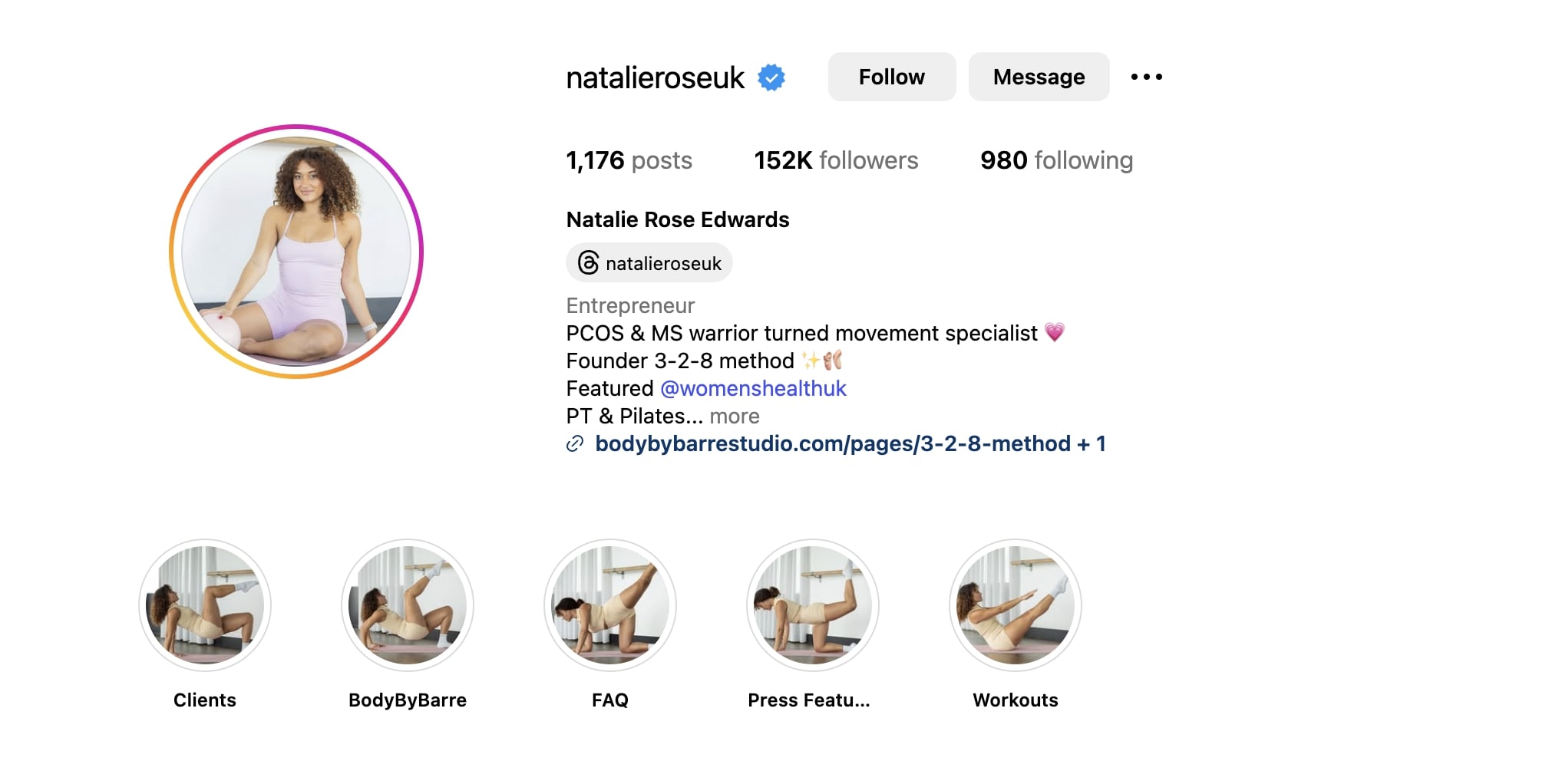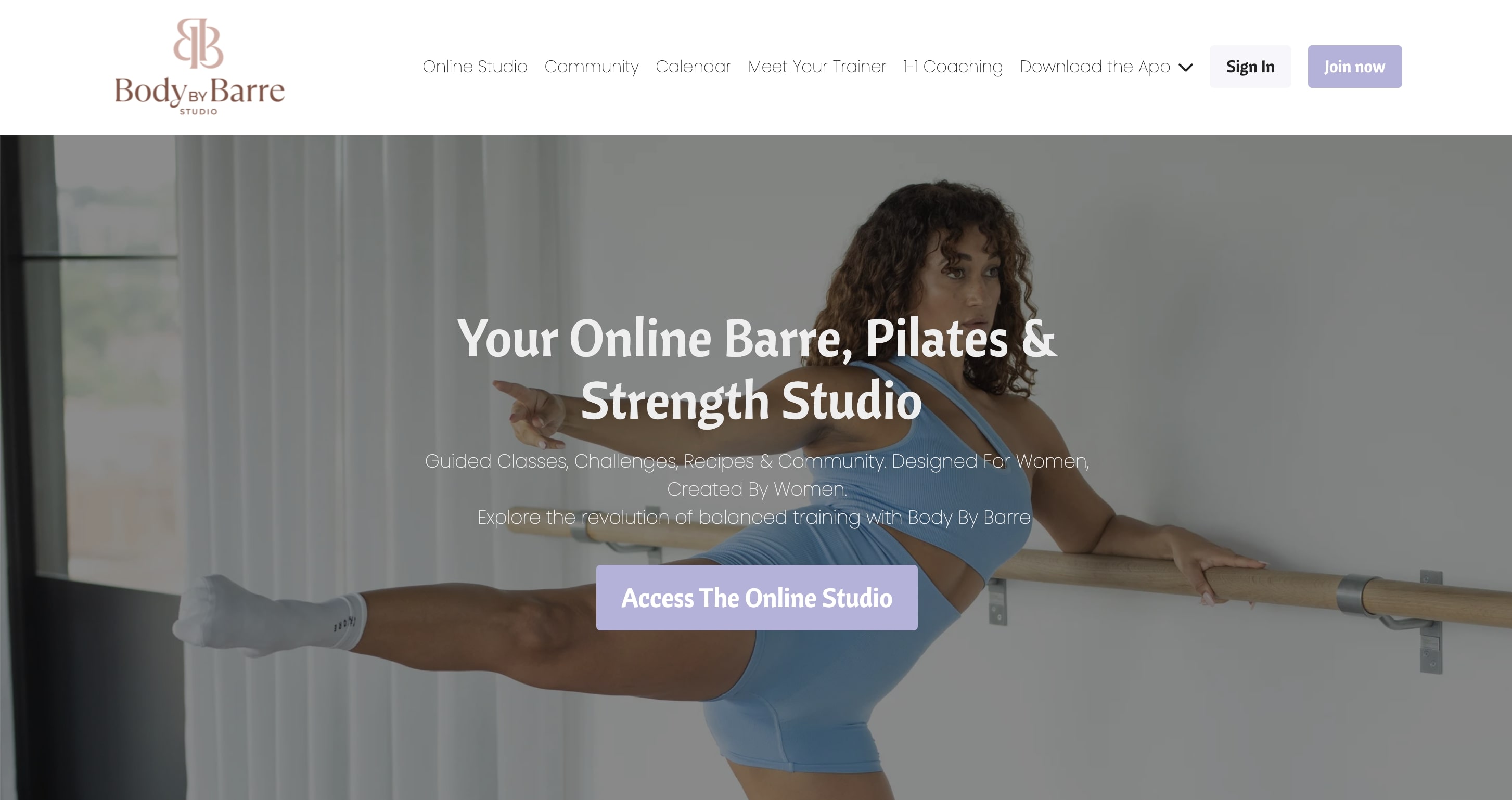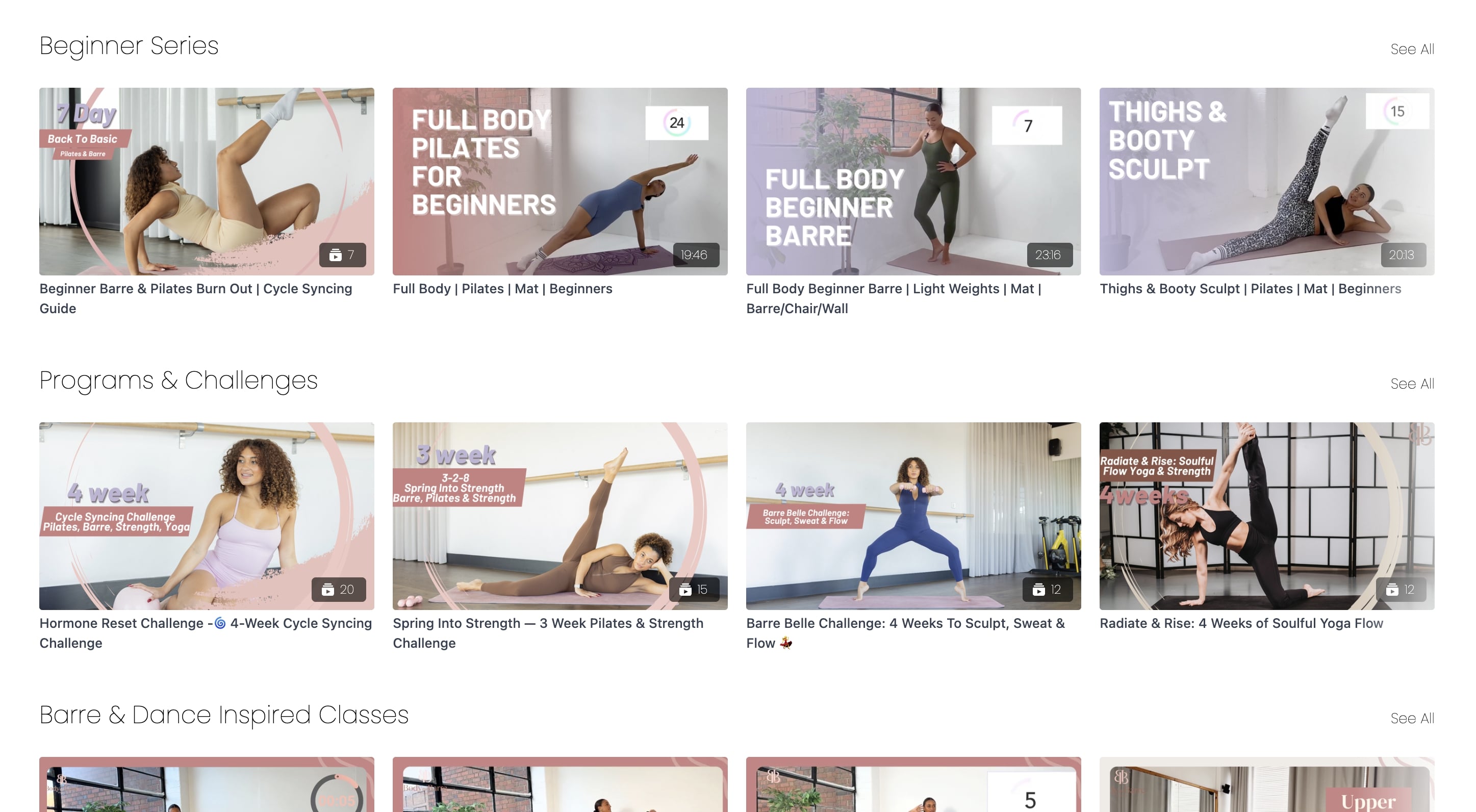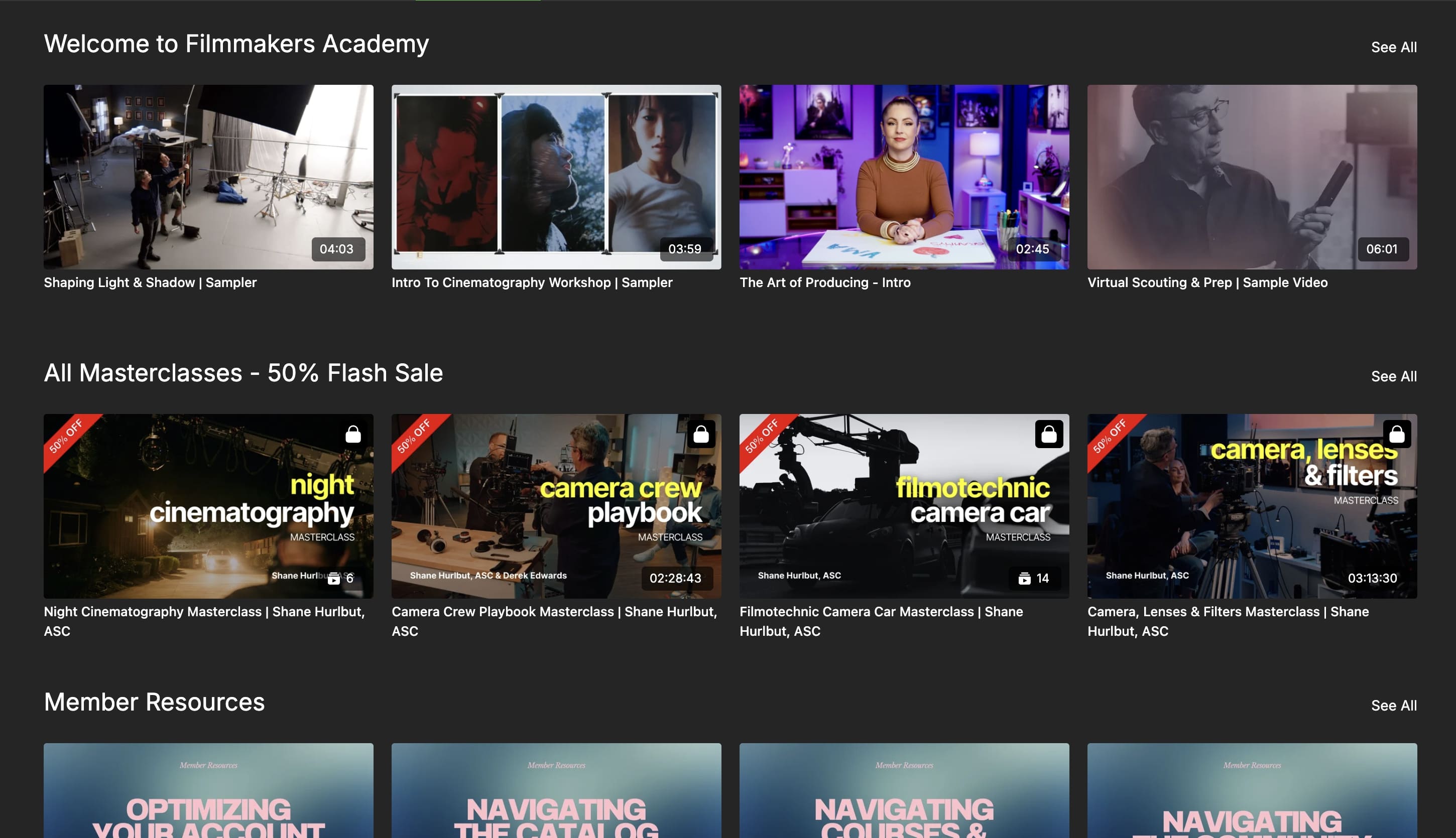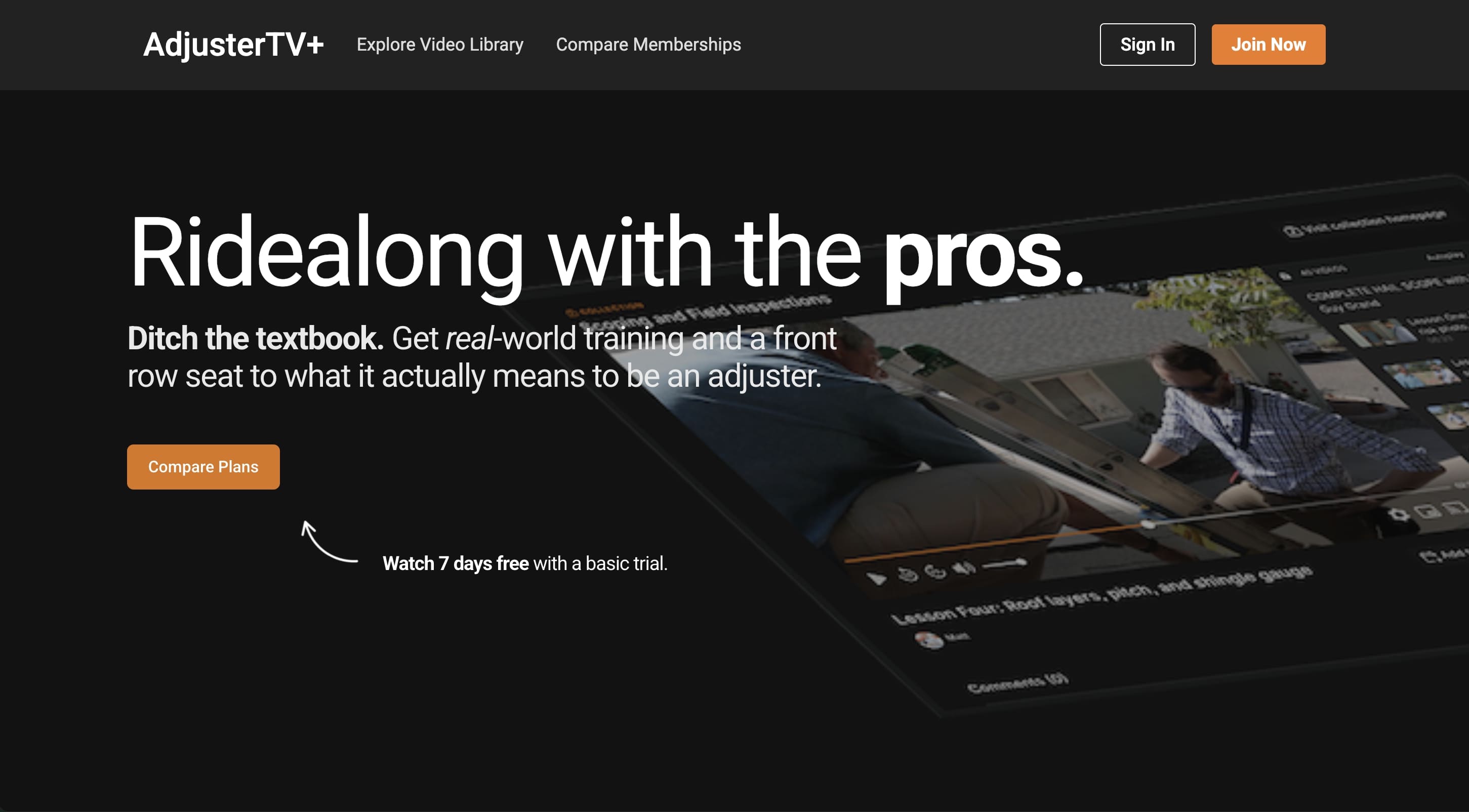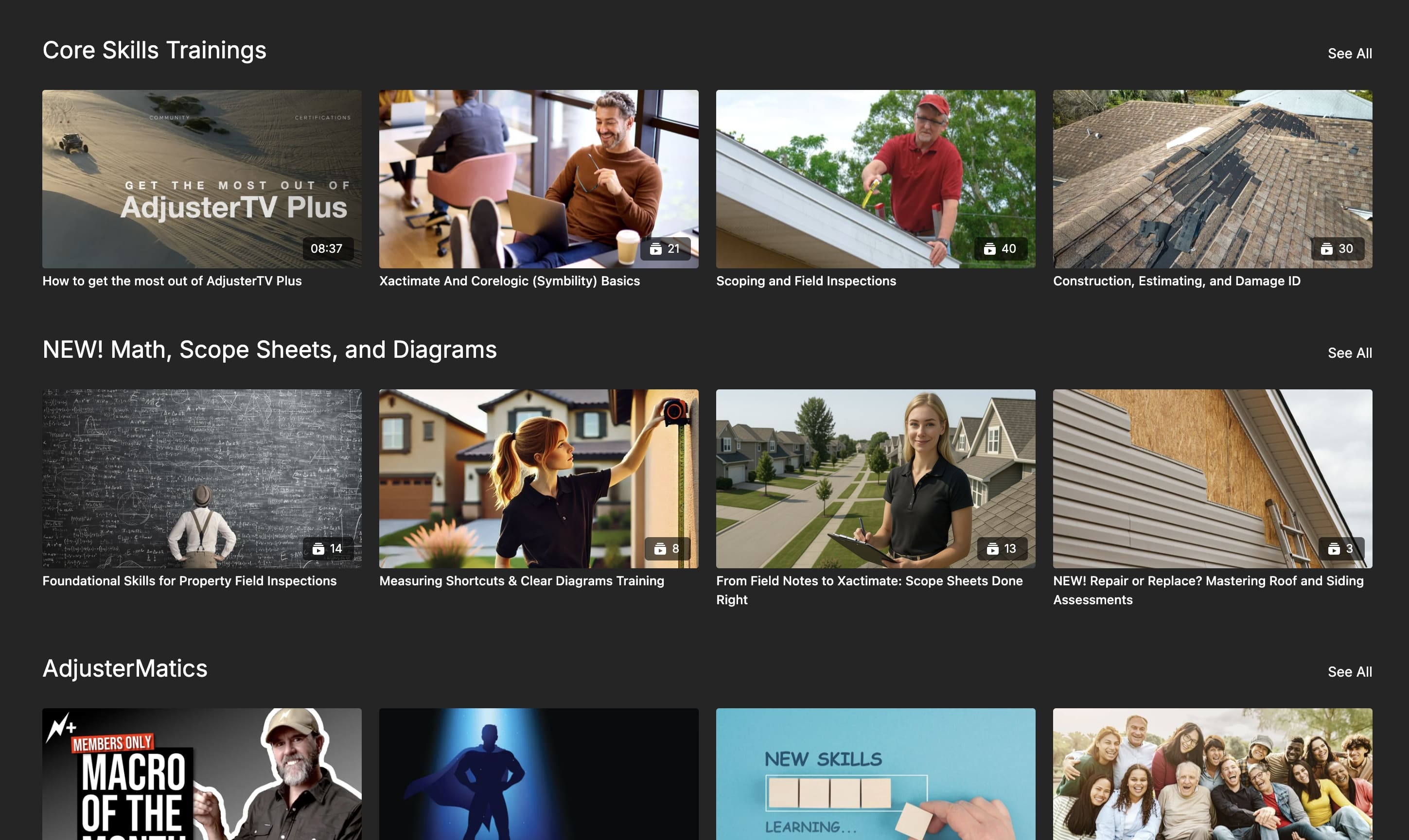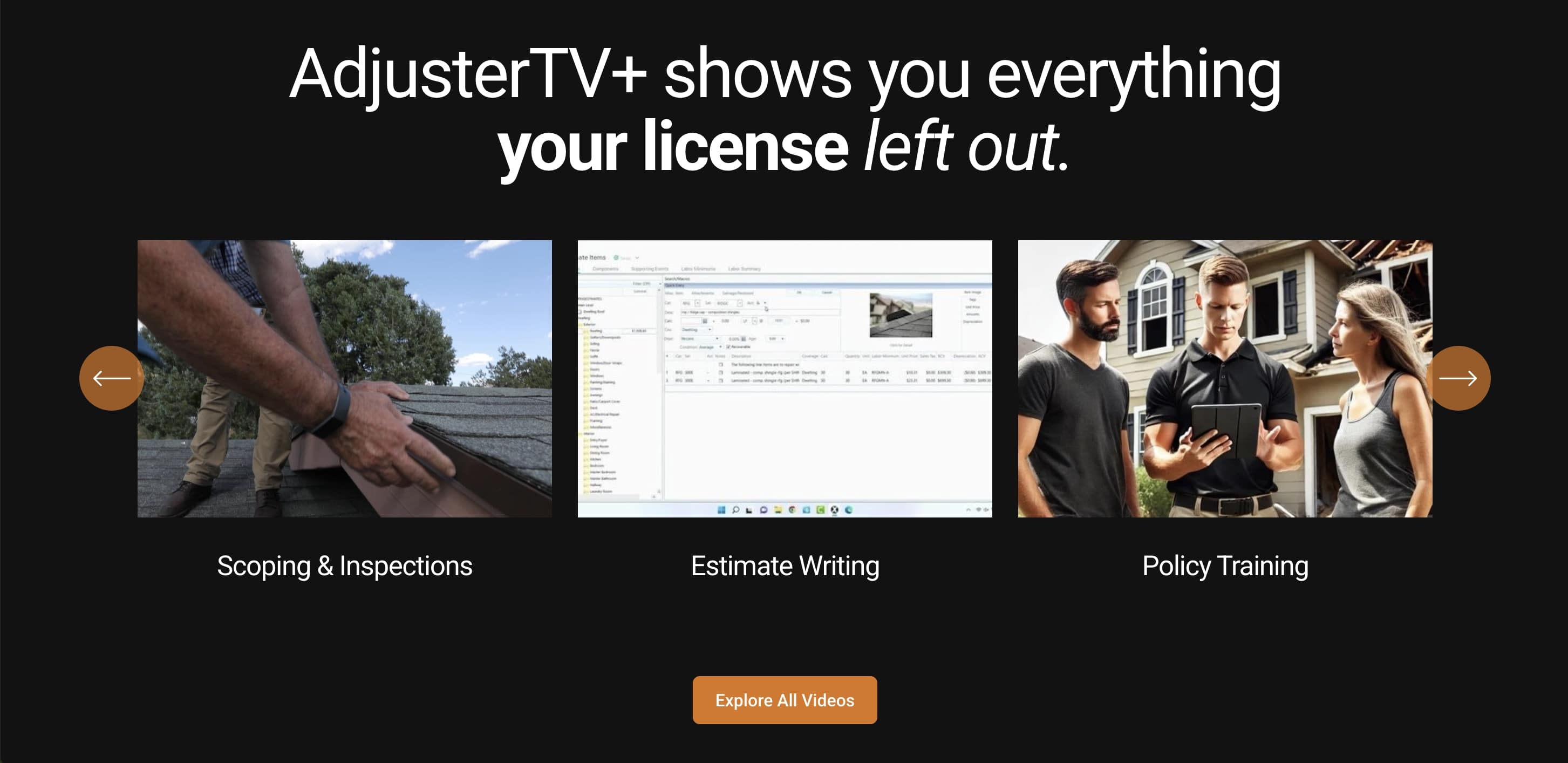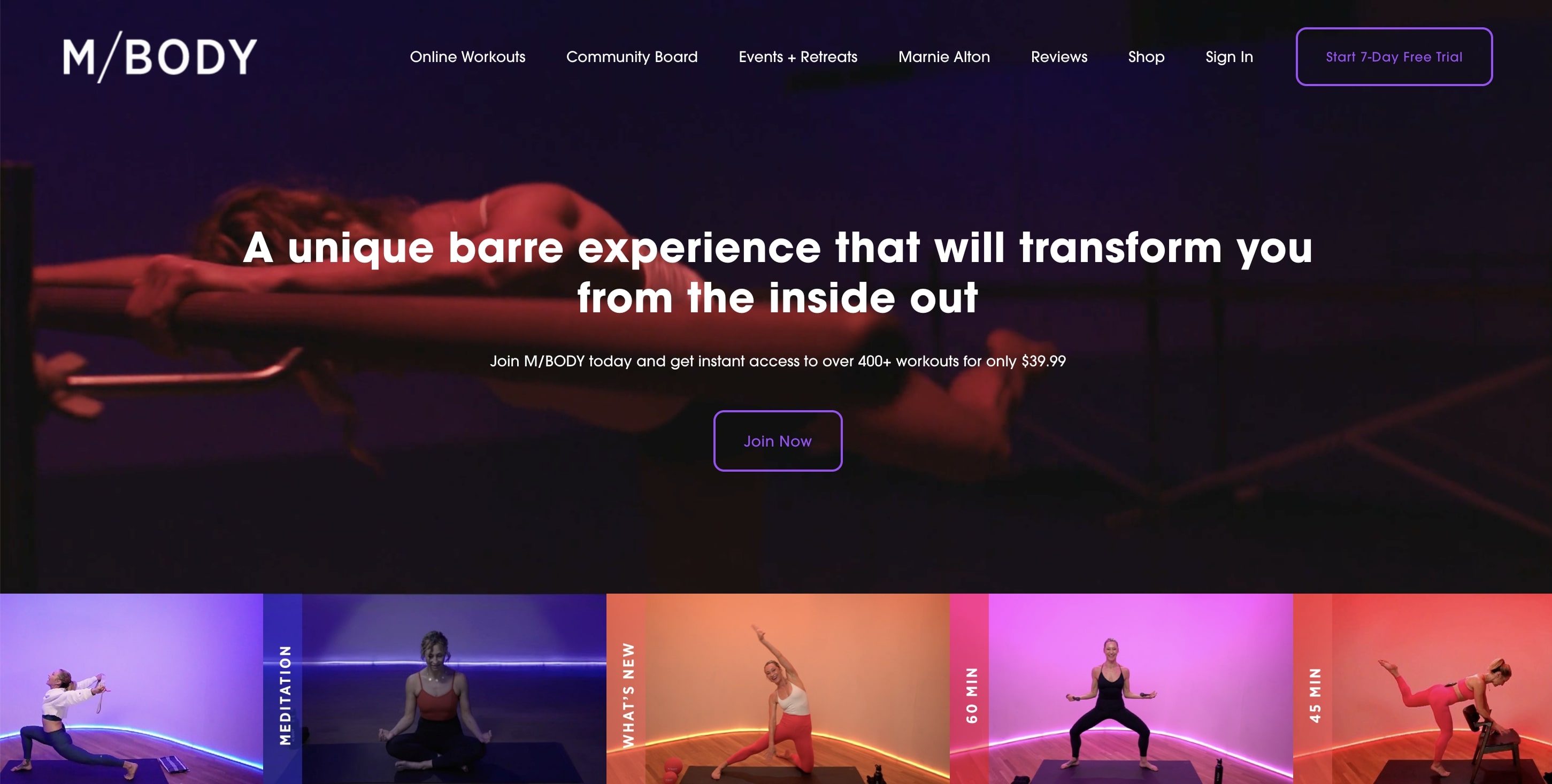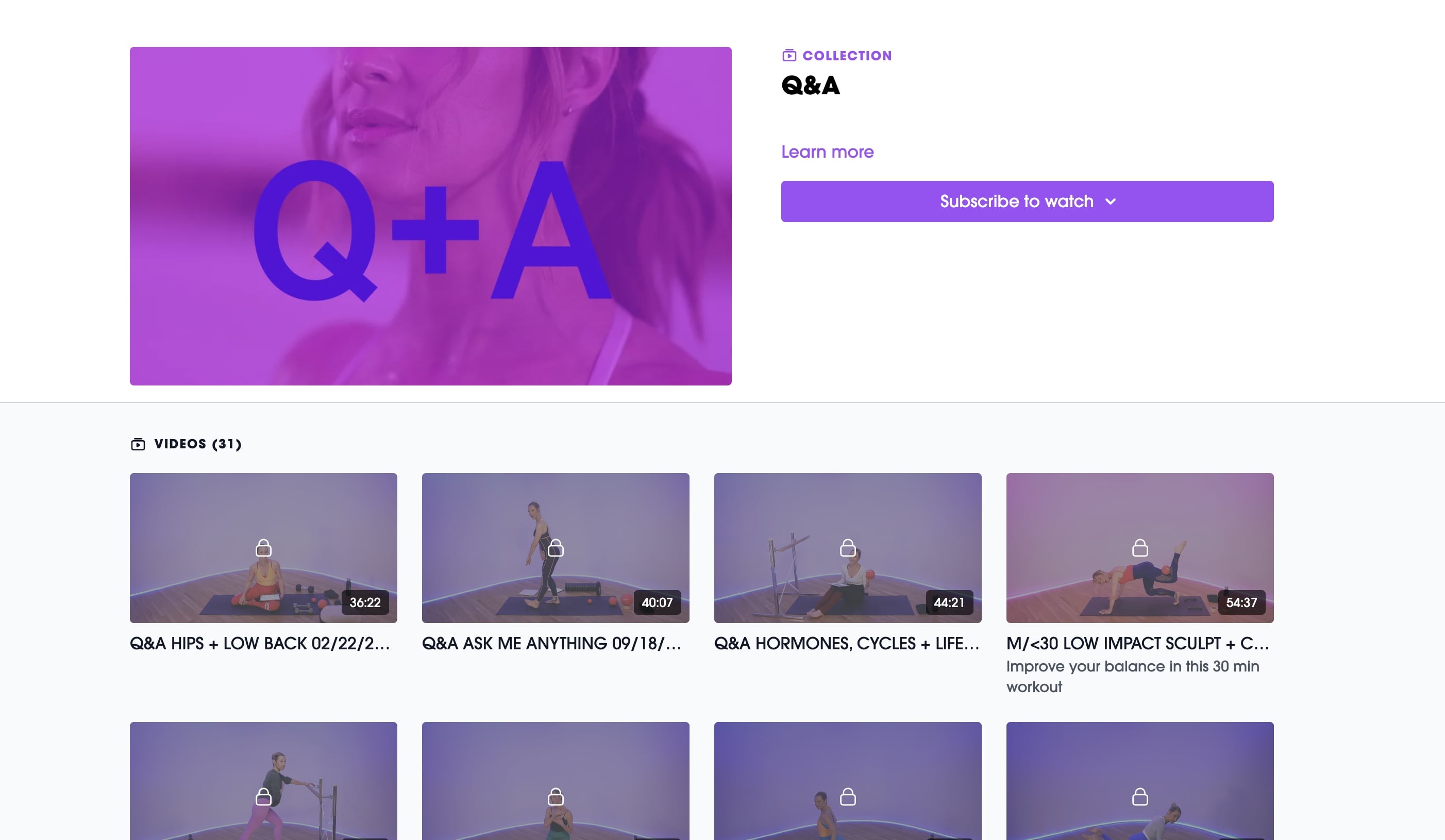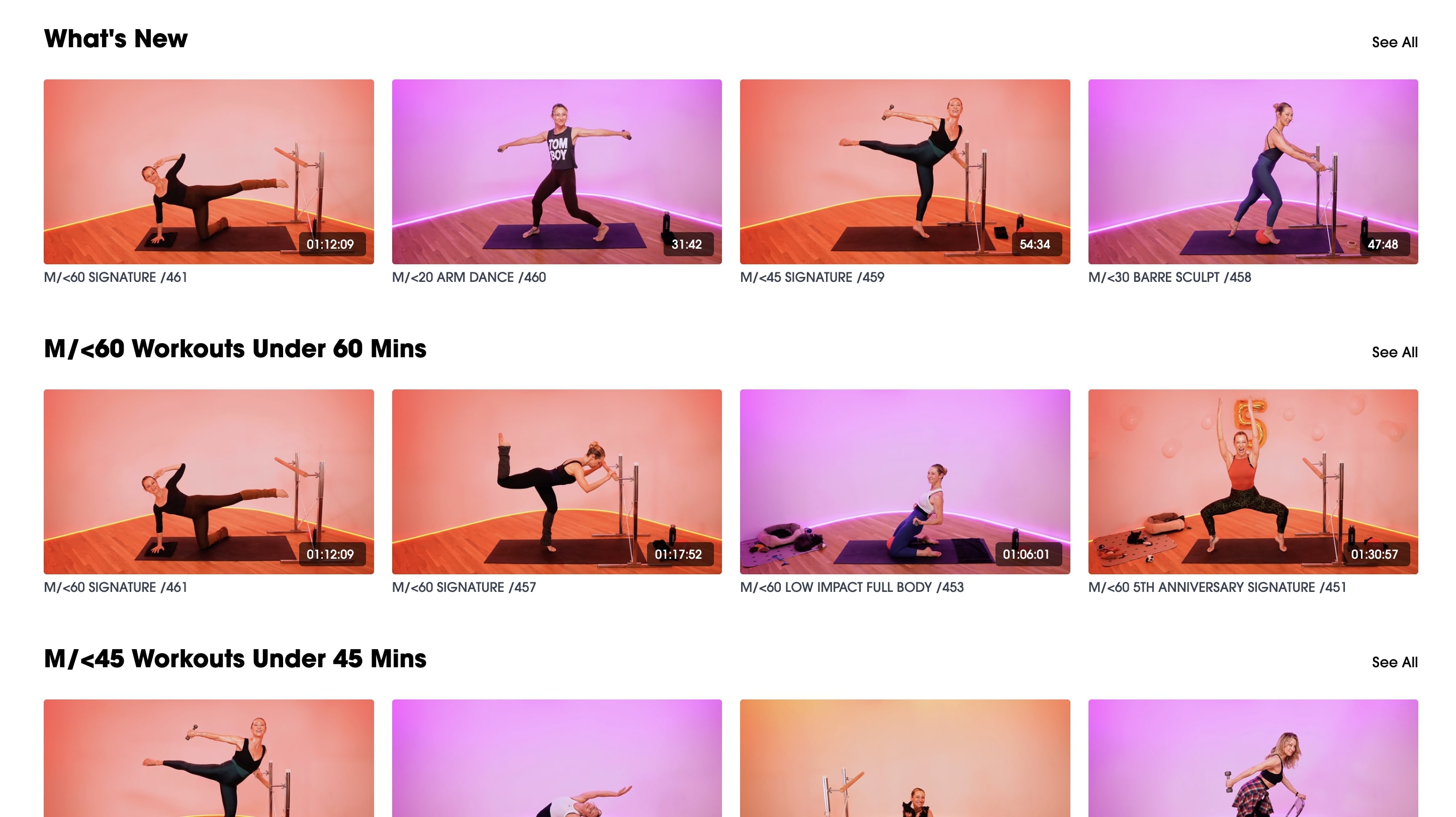Selling memberships is a different game than building a following.
It’s not about chasing likes or playing the algorithm. It’s about building a sustainable, high-value experience that your biggest fans are excited to pay for, month after month.
This guide is your blueprint for doing exactly that.
We’ll show you how to:
- Validate what your audience will actually pay for
- Shape irresistible offers that drive conversions
- Price with confidence (without second-guessing yourself)
- Optimize your platform, pitch, and content for sales
- Launch like a pro – and keep growing post-launch
Who this guide is for:
You’re not here to figure out what camera to buy or how to launch a website.
You’re here because you have an audience and a clear niche, and you’re ready to monetize the trust and momentum you’ve already built. (If you are starting at square one, head over to our guide to starting a membership business instead.)
This guide is focused on taking your new or existing membership business, and optimizing it for more sign-ups and sales.
Let’s dive in!
1. Do your market research (with monetization in mind)
Here’s the hard truth: just because people watch your free content doesn’t mean they’ll pay for it.
To sell memberships that actually convert, you need to dig deeper. It’s not enough to know your audience likes what you create – you need to know what they’ll pay for.
The key is to validate monetizable demand, not just interest.
The sweet spot for a sellable membership isn’t just your niche – it’s the intersection of:
- A clear, painful problem your audience wants to solve
- A proven desire to solve that problem (with money)
- A format they’re already engaging with (or eager to try)
The foundation of every successful membership comes down to one critical question: what problem are you solving for your audience?
That’s why smart creators start with research that validates monetizable demand.
How to uncover what your audience will pay for
The goal isn’t to find any idea – it’s to find the right one. Here’s how.
1. Run a survey
Use a simple Typeform or Google Form to ask direct, strategic questions. Here are a few key questions to include:
- What’s your biggest challenge when it comes to [your niche]?
- What have you already tried to solve this challenge?
- Would you pay for content or a community that helps with this?
- How do you prefer to learn (video tutorials, live classes, written guides)?
- What would make this worth it to you?
💡 Pro Tip: Keep it short and easy. Promote it across your email list, link-in-bio, and DMs. You don’t have to say you’re launching a membership – just that you’re building something to help them.
2. Listen to your DMs, comments, and emails
People will tell you what they need. Look for repeat patterns in the questions you get or the comments that spark the most engagement. Those are your gold mines.
3. Test topics with free lead magnets
Before you build a full library, try offering free resources based on your audience’s pain points – like a guide, template, or mini course. Then track what gets the most downloads or opt-ins.
These resources double as effective lead magnets, which helps to test your membership idea, validate interest, and build your email list at the same time: a win-win-win.
Survey responses are a guide, not a rulebook. You still need to test your content format and see what people actually use and pay for.
A creator that crushed this…
Natalie Rose is the founder of fitness membership, Body by Barre. She polled her audience on Instagram and got crystal-clear feedback: they wanted her signature workouts without the high-ticket 1:1 coaching.
That insight helped her build a membership offer that delivered what her audience already wanted – and scaled it profitably from day one.
2. Design an offer that converts
You’ve validated that your audience wants help with a specific problem. Great.
Now it’s time to design the actual offer – not just the content you love creating, but the experience potential members will pay for and stick with.
This is where many creators go wrong: they build what they want, not what their audience values. That disconnect can tank conversions, even with a strong following.
Let’s fix that by first understanding the building blocks that make a great offer.
A high-converting membership offer has three things:
- Clarity – your audience instantly understands what they get
- Perceived value – it feels worth paying for (and then some)
- Relevance – it solves a problem or creates a transformation they care about
People don’t pay for content. They pay for outcomes, connection, and convenience.
Jade Beason, Creator & Founder of The Creator Project
Here’s how to build a membership that delivers those three things.
Decide what to gate – and what to give away
Free content is great for discovery. Premium content needs to deliver transformation.
Use this simple filter:
- Free = awareness + trust-building
- Paid = outcomes + deeper support
Keep your free content high-value, but save the structured, outcome-driven experiences for members.
For example, Filmmakers Academy offers a free membership tier called Filmmakers Essentials, which allows their audience to gain access to parts of their content library and exclusive community. It’s similar to offering a free trial, but with limited access.
But, to access the full suite of resources, users can opt for paid memberships, which include member-only perks like…
- 1,000+ hours of training videos and 40+ premium courses,
- premium masterclasses,
- and coaching sessions with industry mentors.
Choose a format that matches your audience
There’s no one-size-fits-all. Your format should reflect how your members prefer to consume content (something you uncovered during research).
Common high-converting membership formats include:
- On-demand libraries (great for self-paced learners)
- Live classes or events (great for accountability + connection)
- Private communities (great for long-term retention)
- Blended access tiers (e.g., monthly videos + quarterly live workshops)
Simplify your tiers
Many creators launch with too many pricing tiers or benefits. The result? Confusion. And confused buyers don’t buy.
Start simple. One or two tiers max. Each of your membership levels or tiers should have a clear reason to exist – and be easy to understand at a glance.
If you’re community-led, consider this structure:
- Base Tier: Core video content + private membership community
- Premium Tier: Everything in Base + monthly live sessions + bonus resources
Over time, you can expand – but don’t overcomplicate the offer at launch.
3. Price to sell, not to please
Pricing can feel like guesswork – especially when it comes to the membership model. You don’t want to overcharge and scare people away… but undercharging can hurt your business (and your confidence).
Here’s the truth: your membership pricing isn’t just a number – it’s a positioning tool. Price tells your audience how valuable your offer is before they even experience it.
Lower price tiers are always going to have higher rates of churn. When you pay more for something, you assign more value to it – and are more likely to use it.
It’s time to stop pricing to please, and start pricing to convert and retain. Your price should:
- Reflect the value and transformation you’re offering
- Match your audience’s willingness to pay
- Align with your tiered offer structure
- Position your membership as a premium, intentional experience
Figuring out the right price is worth the time and effort it takes – but, if you want to save some time with step-by-step guidance and a free pricing calculator, then check out our free pricing resource!
Use our free tool to pinpoint your ideal membership price in just 3 steps, leveraging a decade of data.
4. Choose a platform that supports conversion
Now that you’ve shaped your offer and priced it with confidence, it’s time to choose a membership site platform that can actually bring it all to life – and help you sell it.
This is about more than just hosting videos; it’s about building a seamless experience that turns traffic into members, and members into loyal fans.
If we look at different examples of successful membership sites, they all have one thing in common: they found a platform that perfectly fit the needs of their content and audience.
Here’s what your membership platform must include if you’re serious about growing your business:
A premium video streaming experience
Look for a platform that puts video first – with smooth playback, smart organization (like collections, series, and bundles), and an interface that feels intuitive on every device.
Why it matters:
Members won’t stick around if watching your content feels clunky. A great streaming experience keeps them engaged and coming back week after week.
Native live streaming + live chat
Your platform should let you host live streams directly – no third-party tools required. Bonus points for live chat features that let your members interact with you (and each other) in real-time.
Why it matters:
Live content builds urgency and connection. Uscreen creators who stream live earn 2.5x more revenue than those who don’t.
A built-in community space
An engaged community isn’t a “nice-to-have” – it’s the heart of your membership. Your platform should offer a native community hub where members can share wins, ask questions, and feel like they belong.
Why it matters:
Community-led memberships retain members longer. Uscreen customers who use the built-in community feature see 2x higher retention.
Built-in marketing tools + analytics
Choose a platform that will support your membership sales with built-in email tools, promotional features, affiliate options, and analytics that help you track what’s working (and what’s not).
Why it matters:
No more duct-taping five tools together. Built-in marketing tools let you launch smarter, grow faster, and actually understand your numbers.
Flexible monetization options
To sell memberships online, you’ll want to pick a platform that gives you multiple ways to sell, like…
- monthly or annual subscriptions to your on-demand video library,
- pay-per-view rentals for special events or releases,
- one-time bundles for online courses,
… or all of the above.
Why it matters:
Not everyone buys the same way. Flexible monetization lets you match your pricing model to your audience’s preferences and maximize your content’s value.
A creator that crushed this…
Matt Allen, founder of AdjusterTV Plus, started with YouTube and a downloadable PDF. But when he began testing exclusive content behind a basic paywall, he quickly hit friction – poor conversions, manual onboarding, and no real community.
When he switched to Uscreen, he:
- Repackaged his most in-demand videos into an on-demand library
- Launched a private community
- Streamlined payments and content access
- Saw a 409% increase in revenue from more membership sales
Once I moved to a platform that felt professional and had a better experience, my signups started doubling.
Matt Allen, Founder of AdjusterTV Plus
Build, launch and manage your membership, all in one place.
5. Curate your content to drive signups (not just views)
By the time you’re ready to sell online memberships, chances are you’ve published a lot of content – videos, tutorials, livestreams, maybe even full-on courses. That’s great… for audience growth.
But selling a membership? That requires a mindset shift.
This is no longer about pumping out content to stay top of feed – it’s about curating content that drives conversions and builds long-term member value.
Your free content earns attention. Your membership content earns revenue. The key is knowing what belongs where.
Step 1: Know the purpose of each content type
Not all content is created equal. As you transition into selling a membership, categorize your content into two buckets:
1. Conversion Content
This is what helps people decide to join:
- Solves a core pain point fast
- Demonstrates your unique value
- Gives people a “taste” of what they’ll get as members
Example: A short video lesson on a popular topic, paired with a CTA to “go deeper inside the membership.”
2. Retention Content
This is what keeps people paying:
- Helps members build momentum
- Builds connection with you and the community
- Feels exclusive or personalized
Example: Monthly challenges, Q&A sessions, or community-led tutorials.
Step 2: Start with just enough to launch
Worried you don’t have “enough” content to launch? You don’t need a massive video library on day one.
Start with:
- 3 – 5 pieces of high-impact, relevant videos (based on your audience research)
- One clear outcome your content helps achieve
- A plan to drip new content weekly or monthly
Launching lean lets you test what content performs – and what doesn’t – without burning yourself out.
Jade Beason, Creator & Founder of The Creator Project
Step 3: Repurpose existing content into member-only value
You don’t have to start from scratch. In fact, your best membership content might already exist.
Take your top-performing public content and:
- Add deeper commentary or bonus modules
- Turn a how-to video into a structured mini-course
- Bundle related videos into themed collections
- Gate it behind a member paywall with added resources
Example: A YouTube video series becomes an exclusive “7-Day Jumpstart Plan” with worksheets and accountability check-ins.
A creator that crushed this…
Marnie Alton of M/BODY didn’t just post all her workouts online and hope for the best. She launched her membership program with a handful of live and on-demand sessions that tackled her audience’s top requests – then expanded based on real-time feedback.
We didn’t need a massive library to start. What mattered most was helping members feel seen, supported, and excited to come back.
Marnie Alton, Founder of M/BODY
6. Build a membership site that sells (without being pushy)
Your membership website isn’t just a place to house content. It’s your storefront. Your pitch deck. Your conversion engine.
And here’s the good news: You don’t need to be a designer or a copywriter to build a membership site that sells. You just need a clear structure, a compelling message, and a few conversion-boosting best practices.
Let’s break down the essential components of a successful membership site…
1. Compelling homepage with clear value proposition
Your homepage should immediately communicate:
- What your membership offers
- Who it’s for
- Why it’s valuable
Use concise headlines and subheadings to convey the transformation or benefits members can expect. Incorporate engaging visuals and a clear call-to-action (CTA) that guides visitors toward signing up.
2. Intuitive navigation structure
Organize your membership website with user experience in mind:
- Primary Navigation: Include links to key pages like Home, Catalog, Community, and Pricing.
- Secondary Navigation: Provide access to additional resources such as Contact Us, FAQs, and Terms of Service.
An intuitive navigation system ensures visitors can easily find information, reducing friction in the decision-making process.
3. Engaging video catalog
A well-organized video catalog enhances content discoverability:
- Categorize content by themes or topics.
- Use descriptive titles and thumbnails that align with your branding.
- Provide brief summaries to inform users about each video’s content.
This structure helps members find relevant content quickly, increasing satisfaction and retention.
4. Integrated community features
Foster a sense of belonging by incorporating community elements:
- Discussion Forums: Allow members to interact, ask questions, and share experiences.
- Live Q&A Sessions: Engage with your audience in real-time to build trust and rapport.
An active community encourages ongoing engagement and adds value beyond the content itself.
5. Transparent pricing page
Your pricing page should:
- Clearly outline the features and benefits of each membership tier.
- Highlight the value proposition of subscribing.
- Include a straightforward CTA to facilitate the sign-up process.
Transparency in pricing builds trust and helps potential members make informed decisions.
Want a detailed step-by-step of this process? Check out our guide to building a top-tier membership website!
How to Build a Video Membership Site in 8 Easy Steps

7. Nail your messaging and pitch (the “why buy now” factor)
You’ve got the content. You’ve built the platform. But if your messaging doesn’t connect emotionally and clearly communicate value, your conversions will stall.
This is where most creators slip up.
They talk about what their membership includes – but not why it matters.
If your audience doesn’t understand the transformation your membership delivers, they won’t buy. Clarity creates confidence. Confidence creates conversions.
Jade Beason, Creator & Founder of The Creator Project
Let’s break down how to write effective membership messaging that makes people feel excited, understood – and ready to sign up now.
Whether they’re on your website, in your DMs, or reading an email, your audience needs clear answers to:
- Is this right for me?
- Can I find this value somewhere else (for free)?
- Will this get me closer to my goals?
If you’re not answering those questions upfront, you’re leaving money on the table. Here’s how to do that effectively, every time…
Start with a clear value proposition
Your value proposition is your primary message. It should quickly explain:
- Who your membership is for
- What outcome it delivers
- What makes it unique
Example
“The Collective helps beginner and part-time creators grow an audience and earn an income through exclusive masterclasses and a supportive creator community.”
Use this message as the foundation for your sales page, social content, and email CTAs.
Then layer in descriptive + transformational messaging
- Descriptive = the what: features, frequency, format
- Transformational = the why: how it changes their life or solves their problem
Example
Before: “Includes monthly live sessions and member forum.”
After: “Monthly live sessions and a private member forum to help you build momentum and stay accountable – no more going it alone.”
Use this wherever you promote the individual facets that make up your membership offering.
8. Launch, promote, and keep selling (post-launch is still sales)
You’ve built and tested your membership. Now it’s time to launch – and keep the momentum going!
Here’s the thing: launch day is not the end of your sales cycle – it’s the start. The way you promote and nurture your membership in the first 30 days can set the tone for months (or years) of steady revenue.
Let’s break it down.
A 4-week social media launch plan (that actually converts)
Instead of winging it with random “launch hype” posts, use a structured plan to build excitement and answer questions before your doors open.
Here’s how to do it, week by week:
Week 4: Build in public
Start by sharing your story. Show the “why” behind your membership and what inspired you to create it.
A few days later, share exclusive access to a behind-the-scenes look at your process – like filming, editing, or setting up your membership website.
End the week by sharing social proof. Show member testimonials or even positive comments on your free content to reinforce your credibility. Use this as a CTA to join your email list – so you’re building your warmest leads before launch.
Week 3: Tease the solutions
This week is about positioning your membership as the answer to your audience’s biggest challenges.
- Post 1: Talk about a common problem your audience faces – and how your membership will solve it.
- Post 2: Address the barriers holding them back – and how your unique approach makes it easier.
- Post 3: Share an exclusive content preview – like a sneak peek video or upcoming live session.
Week 2: Get specific
Now’s the time to show exactly what’s inside.
- Post 1: Highlight one key benefit of your membership that excites your audience (like accountability, community, or live access).
- Post 2: Mythbust a common objection – like “I don’t have time” or “I’m not advanced enough.”
- Post 3: Host a Q&A session. Invite questions about your membership and answer them in Stories or a live session. This not only tackles objections – it also shows you’re accessible and invested in helping.
Week 1: Turn interest into action
The final countdown! Post daily this week, mixing Stories and feed posts.
- Day 1: Launch countdown graphic or video.
- Day 2 – 6: Keep reinforcing the transformation your membership offers – not just the features.
- Day 7 (Launch day!): Go big! Take your audience on a virtual tour of your membership site, show what they’ll get inside, and make them feel part of the celebration.
Bring your voice and excitement – launch day isn’t about a stuffy sales pitch. It’s about showing people what they’re missing if they don’t join.
Post-launch: keep the sales cycle going
Your job doesn’t end on launch day. Keep promoting your membership consistently to grow your membership base:
- Use automatic emails to re-engage warm leads.
- Highlight wins and testimonials from existing members on social.
- Run limited-time offers or seasonal challenges to re-spark urgency.
- Keep showing up: new content, new reasons to join.
Don’t forget to check in with your existing customers on a regular basis, too.
You can build lasting relationships as long as you’re nurturing your current members, delivering real value, and always striving to improve your member experience. Happy members attract more members!
Wrapping up
You’ve already built trust with your audience. Now, you’re ready to turn that trust into a sustainable, profitable community that grows alongside you.
If you take one thing from this guide, let it be this: selling memberships is a process of continuous learning and refinement. Your first launch won’t be your final launch. Your first members will help shape what comes next. And every piece of feedback – every sign-up, every retention win – is a step forward.
Build, launch and manage your membership, all in one place.



